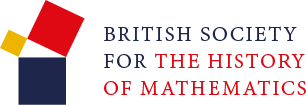Current HiMEd Lecturers
Current HiMEd Lecturers
The BSHM appointed three HiMEd Lecturers for 2025-26. Click on the Lecturer's name to access a page with a bio and their topics of interest.
- Deborah Kent (continuing from previous year)
- Peter Rowlett (continuing from previous year)
- Robin Wilson (continuing from previous year)
